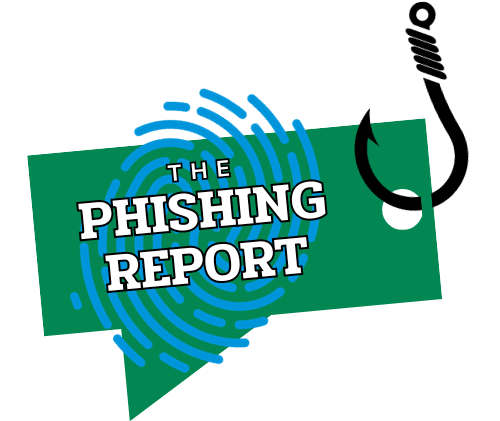Like the legendary tale of the Trojan Horse, threats to your organization often hide in plain sight. You might think your team is well-prepared, but without regular practice, even the best security measures can falter. Monthly cybersecurity drills can sharpen your employees’ skills, making them more vigilant and responsive to potential breaches. Consider how these simulations could not only expose vulnerabilities but also foster a culture of readiness. What strategies can you implement to guarantee these drills are both effective and engaging for your team?
Key Takeaways
- Monthly cybersecurity drills enhance employee awareness by simulating real-world threats, improving their ability to recognize and respond to breaches.
- Engaging activities like phishing simulations and incident response drills develop practical skills and foster a proactive security culture among employees.
- A flexible training schedule, informed by team input, ensures that drills align with workloads and organizational risk profiles, maximizing participation and effectiveness.
- Interactive workshops and gamified scenarios increase employee engagement, making learning about cybersecurity protocols enjoyable and memorable.
- Measuring drill effectiveness through clear metrics and participant feedback allows for continuous improvement, ensuring drills contribute to heightened vigilance and preparedness.
Importance of Cybersecurity Drills
When it comes to safeguarding your organization against cyber threats, conducting monthly cybersecurity drills is crucial. These drills not only enhance cyber awareness among employees but also serve as a critical component of your overall risk management strategy. By simulating real-world scenarios, you create opportunities for your team to practice their response to potential breaches, which can greatly reduce the impact of actual incidents.
Each drill you conduct helps identify vulnerabilities within your systems and processes, allowing you to address them proactively. Employees become more familiar with security protocols, and they learn to recognize phishing attempts and other common threats. This hands-on experience reinforces the importance of vigilance and encourages a culture of security within your organization.
Moreover, regular drills help you assess the effectiveness of your current policies and procedures, ensuring they remain relevant in a constantly evolving threat landscape. By fostering an environment where employees feel comfortable discussing cybersecurity concerns, you strengthen your organization’s resilience against attacks. In short, monthly drills are not just a checkbox; they’re a crucial investment in your organization’s future, enabling you to navigate the complexities of modern cyber risks with confidence.
Types of Monthly Activities
How can you guarantee your monthly cybersecurity drills are effective and engaging? Start by incorporating a mix of activities that target different aspects of cybersecurity awareness. For instance, phishing simulations are a powerful tool. By sending realistic phishing emails to your employees, you can assess their ability to recognize and report these threats. This not only tests their vigilance but also reinforces the importance of scrutiny in every email they receive.
Next, consider conducting incident response drills. These activities immerse your team in realistic scenarios where they must identify and respond to cybersecurity incidents. By walking through the steps of reporting a breach or mitigating a threat, employees gain hands-on experience that’s invaluable during a real crisis.
Additionally, you might include brief informational sessions or workshops that focus on current cybersecurity trends and threats. Encourage discussions to foster a culture of awareness and continuous learning.
Creating a Training Schedule
To create an effective training schedule for your monthly cybersecurity drills, you need to assess your team’s availability and learning needs. Start by gathering input from team members regarding their current workloads and preferred training times. This step guarantees that you consider their schedules, allowing for ideal participation.
Next, determine the appropriate training frequency. Monthly drills may suffice, but you might find that certain teams require more frequent sessions based on their roles or past performance. Tailor the frequency to match your organization’s risk profile, guaranteeing that employees receive adequate exposure to potential threats.
Incorporate schedule flexibility into your training plan. Consider offering multiple sessions or on-demand resources that employees can access at their convenience. This approach not only accommodates various time zones or shifts but also respects individual learning paces.
Finally, don’t forget to periodically review and adjust your training schedule. Collect feedback after each drill and analyze performance metrics to identify trends and areas for improvement. By remaining adaptable and responsive to your team’s needs, you’ll foster a culture of vigilance and preparedness within your organization.
Engaging Employees Effectively
Engaging employees effectively during cybersecurity drills is essential for enhancing their learning and retention. When you adopt interactive workshops, you create a dynamic environment that encourages participation and collaboration. Instead of passive learning, employees can actively contribute to discussions, share insights, and ask questions, which deepens their understanding of cybersecurity protocols.
Incorporating gamified scenarios can further elevate engagement. By transforming drills into competitive challenges, you not only make learning enjoyable but also stimulate critical thinking. Employees can face realistic threats in a controlled setting, allowing them to practice their responses without real-world consequences. This method fosters a sense of urgency and excitement, making it easier for employees to remember key concepts.
Furthermore, blending both interactive workshops and gamified scenarios addresses diverse learning styles within your workforce. Some employees may thrive in collaborative settings, while others excel in competitive environments. By catering to these different preferences, you guarantee that everyone remains engaged and invested in the training process.
Ultimately, a well-structured approach to engagement not only boosts employees’ cybersecurity awareness but also cultivates a culture of vigilance within your organization, preparing everyone to respond effectively to potential threats.
Measuring Drill Effectiveness
While conducting cybersecurity drills is essential, measuring their effectiveness is equally important to guarantee they yield the desired outcomes. To do this, you’ll want to establish clear drill metrics that can provide quantifiable data on your employees’ performance. Metrics like response time, accuracy in identifying threats, and adherence to protocols can reveal how well participants understand the material and how effectively they can apply it under pressure.
Collecting participant feedback is another vital component. After each drill, ask employees to share their thoughts on the exercise. Did they find it realistic? Were the objectives clear? This feedback gives you insight into areas that may need improvement and helps gauge the overall impact of the drills on employee awareness and confidence.
Continuous Improvement Strategies
Evaluating the effectiveness of cybersecurity drills sets the stage for implementing continuous improvement strategies. To enhance your cybersecurity posture, you need to establish robust feedback loops. After each drill, gather input from participants regarding their experiences and challenges. This feedback is essential; it informs you about what worked and what didn’t, allowing for targeted adjustments in future drills.
Incorporating adaptive learning techniques is another key strategy. By analyzing performance data and identifying patterns, you can tailor your drills to address specific vulnerabilities. For instance, if employees struggle with phishing simulations, you can increase the frequency of such drills, integrating them into a broader training program focused on recognition and response.
Moreover, leveraging technology can automate aspects of feedback collection and analysis. Use surveys or digital platforms to streamline the process, ensuring that insights are quickly translated into actionable improvements. Set specific, measurable goals for each drill, and assess progress over time. By fostering a culture of continuous improvement, you’ll not only enhance employee vigilance but also create a more resilient cybersecurity environment. This proactive approach will ultimately safeguard your organization against evolving threats.
Frequently Asked Questions
What Are the Costs Associated With Implementing Monthly Cybersecurity Drills?
Implementing monthly cybersecurity drills involves budget considerations for training expenses, software tools, and potential downtime. You’ll need to evaluate these costs against the benefits of enhanced employee awareness and improved organizational security.
How Can We Customize Drills for Different Departments?
To customize drills, identify department-specific scenarios and incorporate role-based training. Tailor exercises to reflect unique challenges each department faces, ensuring employees engage meaningfully and develop relevant skills to enhance overall cybersecurity awareness and response.
Are There Specific Tools Recommended for Conducting Drills?
In today’s digital age, utilizing tools like phishing simulations and security awareness platforms can greatly enhance your drills. They provide realistic scenarios, helping you gauge and improve your team’s responsiveness to potential threats effectively.
What Role Does Leadership Play in These Drills?
Leadership plays an essential role in these drills by ensuring accountability and fostering effective communication strategies. You’ll find that their guidance directly impacts engagement, encouraging employees to take security seriously and actively participate in the drills.
How Can We Encourage Reluctant Employees to Participate?
Imagine a garden where every plant thrives through sunlight and water. To encourage reluctant employees, implement incentive programs and foster peer support, creating an environment where participation flourishes and everyone feels valued and motivated.
Final Thoughts
In the ever-evolving landscape of cyber threats, monthly cybersecurity drills act as your organization’s shield, fortifying defenses and sharpening awareness. By actively participating in these simulations, you not only enhance your skills but also contribute to a culture of vigilance. Remember, complacency is the enemy of security; stay proactive, and continuously refine your approach. Embrace these drills as an ongoing journey toward resilience, ensuring you’re always a step ahead of potential threats.

